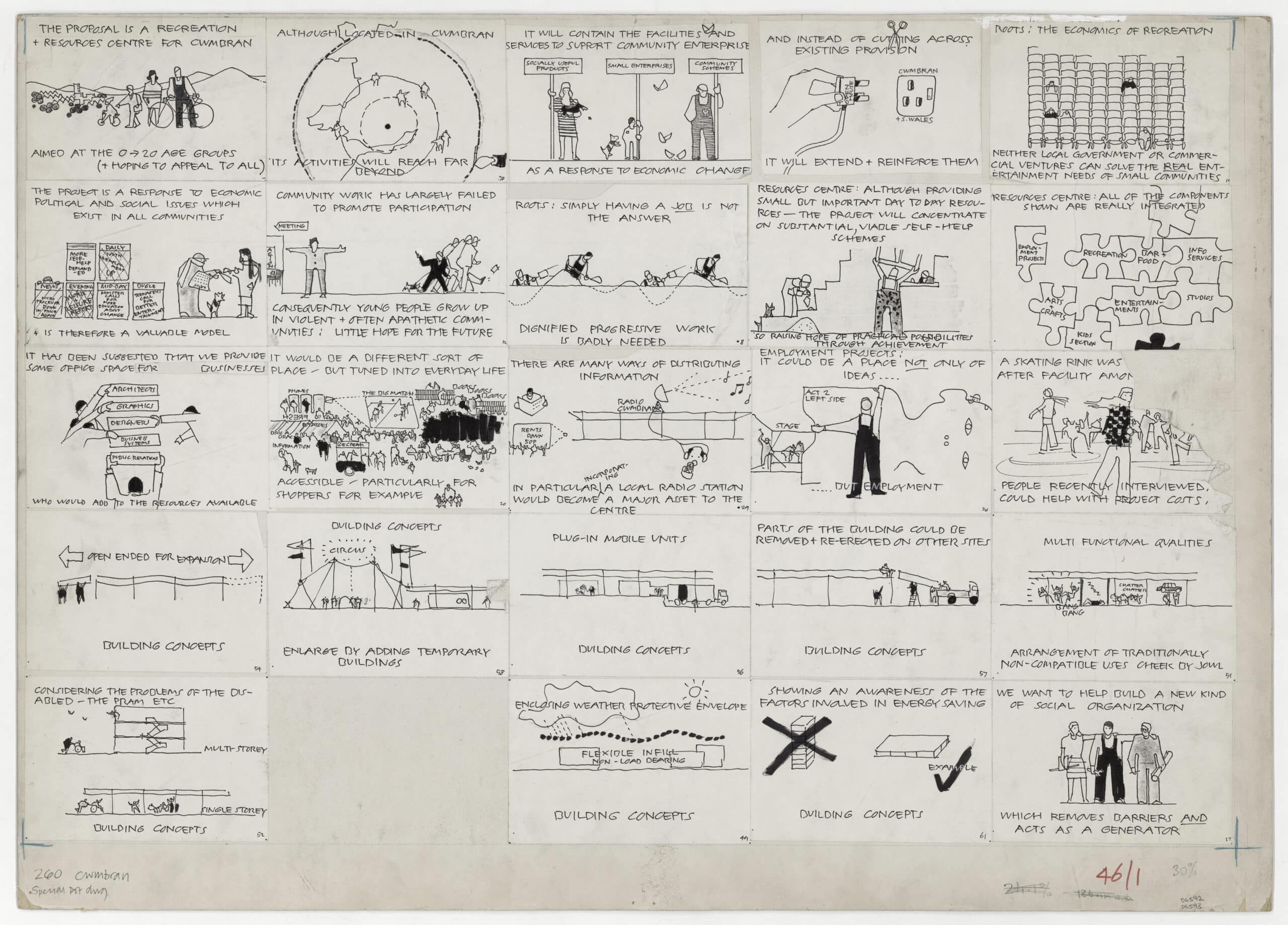DMJ – From Team 4 to Foster Associates: Condensed Narratives and Expanded Storytelling

The work of Team 4 Architects (1963–1967) and Norman and Wendy Foster’s continuation as Foster Associates (1967–1992) is typically examined through their built projects rather than through their extensive drawing repertoire and its imaginative potential. This article unpacks the narrative strategies employed by the two British practices, focusing on the role of drawings in shaping architectural narratives and their significance within an evolving design methodology. By studying the representational tools employed by Team 4 and Foster Associates, we can trace a narrative evolution tied to architectural mediation and identify instances where the two emerging architectural practices brought together innovative tectonic approaches and anatomical drawing techniques. The context in which these graphic explorations emerged reveals complex connections between the built environment, visual culture and media – but also how Paul Rudolph’s cross-section perspectives, Gordon Cullen’s serial views, Archigram’s speculative compositions and James Stirling’s varied modes of drawing became important touchstones for architecture’s visual currency.
The article combines extensive archival research conducted in Spain, the UK and the US with interviews featuring key surviving figures. The narrative evolution observed in the work of Team 4 and Foster Associates is characterised by a diverse array of drawing types: cross-sections, cutaway elevations, perspective vistas and comic-book-like vignettes. Depending on their narrative purpose, these drawings can be classified through the interplay of two categories: ‘condensed narratives’, which encapsulate multiple spatial and multitemporal aspects within a single representation, and ‘expanded storytelling’, which unfolds in sequences or series, requiring a comprehensive set. The extensive drawing repertoire of Team 4 and Foster Associates demonstrates the impressive capacity of these practices to ‘hack’ conventional depictions, incorporating storytelling techniques and transforming static drawings into dynamic representations that enhance cognitive impact and viewer engagement. These dynamic representations, combining drafting techniques with communication design and technological aesthetics, also claim a significant place in the history of high-tech architecture and, more broadly, visual culture.
Download the full article as a printable PDF
DMJournal–Architecture and Representation
No. 3: Storytelling
Edited by Mark Dorrian and Paul Carter
ISSN 2753-5010 (Online)
ISBN (tbc)
About the author
Gabriel Hernández is an architect, curator, and scholar from the Canary Islands. Since 2020, he has been an Adjunct Professor of Analysis at ETSAM/UPM. His work and interests focus on curatorial and institutional practice, design systems, and the intersection of architecture, art, and landscape. A Fulbright scholar at Yale and MIT, his research has been recognised with the Docomomo US NY/Tristate Emerging Scholar award, the Research and Design Principles Scholar mention and the Yuste Foundation European Research grant. His role as the founding Head of Education and Research at the Norman Foster Foundation led to his doctoral research on the representation of design systems through archival research. Gabriel is an active participant in global forums, publishes across international journals and engages in editorial and curatorial projects.
